Artnet News Pro
Italy Is Emerging as an Unexpected Hub for Crypto Art. But Regulatory Challenges Are Stunting the Growth of Its NFT Market
Here’s what needs to happen for the Italian cultural Renaissance to trickle down to the market.
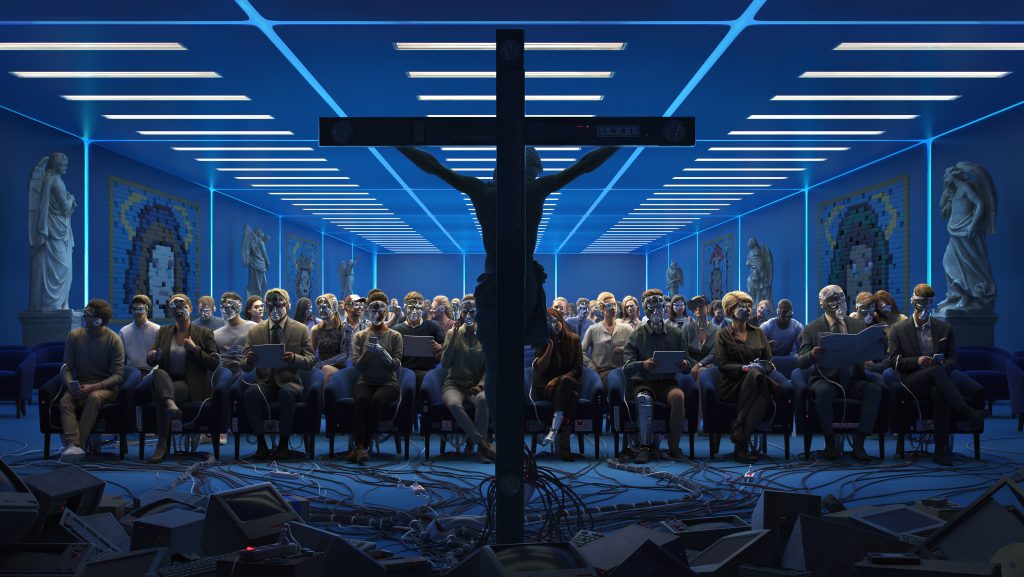
Here’s what needs to happen for the Italian cultural Renaissance to trickle down to the market.

Rebecca Anne Proctor

As the complex phenomenon of cryptocurrency continues to revolutionize the way the world does business, an unlikely player has emerged in crypto art scene: Italy. For a relatively small country distinguished by its thousands of years of art history, Italy’s “crypto art Renaissance”—as some are calling it—is both surprising and encouraging.
Over the past few years, a growing pool of trailblazing young digital Italian artists have been pushing the demand for Italian crypto art and fostering what some describe as a “cultural revival” in a country whose creative output has long been rooted in traditional media.
“Italy has been a pioneer in producing NFT artists,” Giacomo Nicolella Maschietti, a digital art expert, told Artnet News. “Italian artists have been experimenting in digital crypto art and NFTs since 2018—a few years before the global market for NFTs exploded in 2021.”
On the major NFT marketplace SuperRare, Italy ranks third in the world for total sales. Transactions for work by a total of 56 Italian artists have garnered approximately $10.4 million, according to the platform. The country comes in seventh globally for the total number of SuperRare users (approximately 200,000)—placing it among the ranks of much larger nations like the United States, Canada, and Germany.
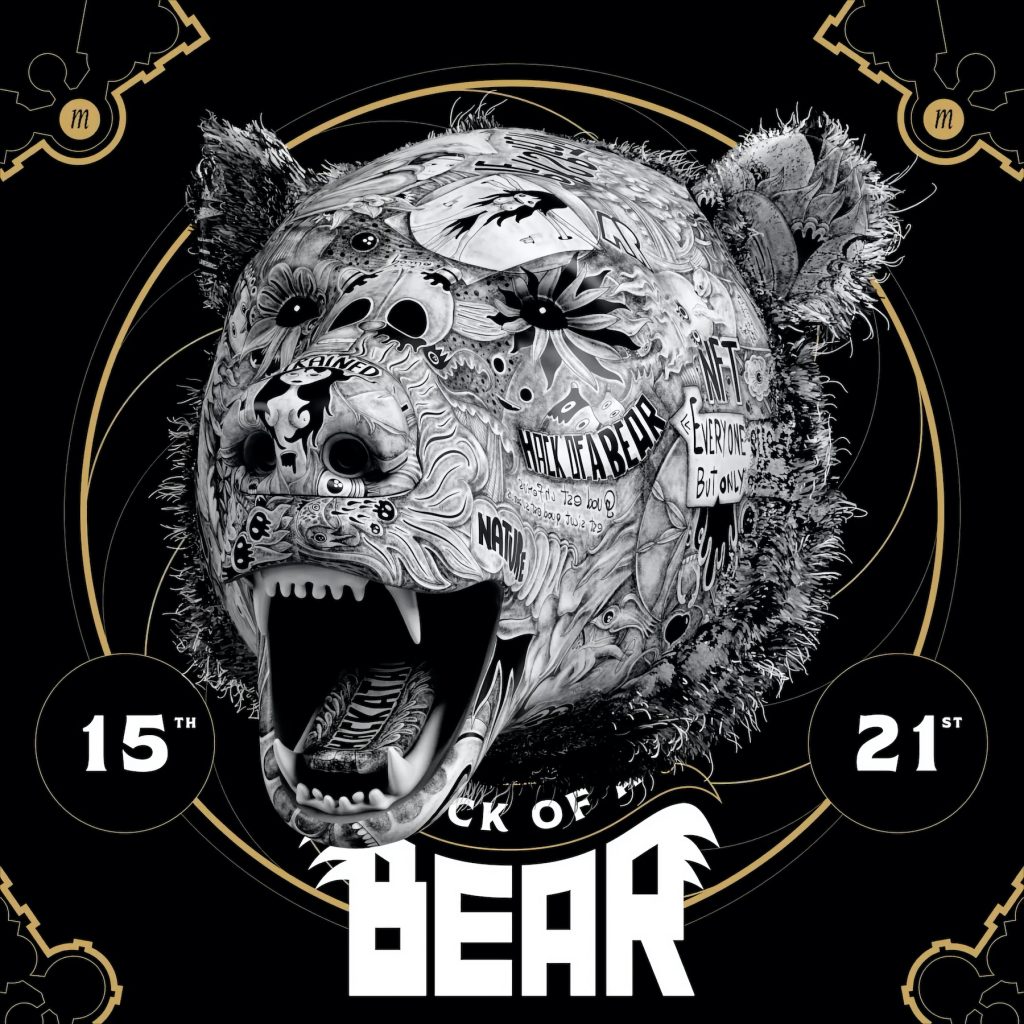
Hackatao, Hack of a Bear. Courtesy SuperRare.
“From the earliest days of crypto art, there was strong interest and traction in Italy,” Jonathan Perkins, co-founder of SuperRare Labs—the company behind the marketplace—told Artnet News.
A husband-and-wife duo known as Hackatao were the third artists on SuperRare, followed closely by other Italian artists like Mattia Cuttini, Perkins said. A prominent curator and publicist, Eleanora Brizi, published a book about Rare Pepes. And gatekeepers of the Italian cultural landscape have also embraced NFTs and crypto art, with articles appearing in Italian Vogue, Italian Vice, and Abitare, among others.
Italian NFT artist Federico Clapis’s work has sold for as much as 44.7 ETH ($180,000), while Hackatao’s has fetched as much as 185ETH ($575,000). Another major player, Milan-based DotPigeon, has sold NFTs for $250,000 on Nifty Gateway.
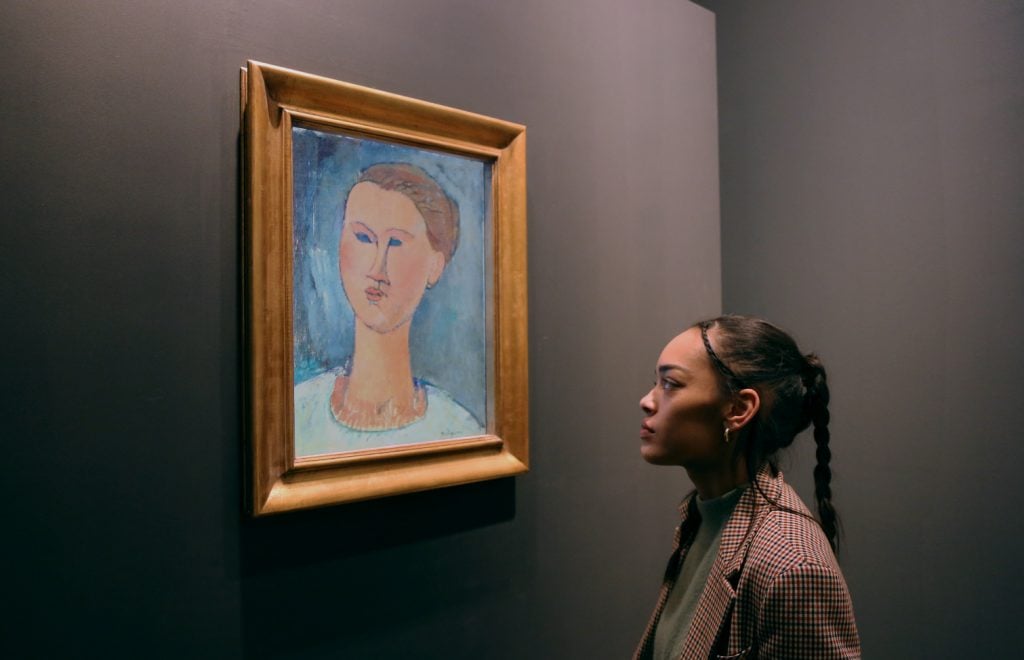
Amedeo Modigliani, Testa di Giovane Donna (Head of a Young Lady). Conceived in 1915 and digitised in 2021 DAW® (Digital Artwork), Image by Perry-James Sugden.
Several blockbuster digital art exhibitions staged in recent months offer further proof of the burgeoning scene for crypto art in Italy. In July 2021, Cambi Auction House hosted Italy’s first crypto art auction in Milan. The collection, titled “Dystopian Visions,” was curated by Serena Tabacchi, director and co-founder of the Museum of Contemporary Digital Art (MoCDA), another mover and shaker in Italy’s digital art market who previously worked at Tate Modern. The sale presented digital art and NFTs by Italian artists, mainly in their 20s and 30s.
Last fall, Milan’s DART | Dynamic Art Museum of the Permanente presented the first exhibition of NFT and crypto art in an Italian museum. The museum opened a follow-up show on March 30 titled “NFT Art of the Future” (until May 25). The august Palazzo Strozzi in Florence is also preparing to open “Let’s Get Digital,” which will feature work by some of the NFT world’s biggest stars, including Refik Anadol, Daniel Arsham, and Beeple, who additionally has just been invited to take part in a major exhibition at Turin’s Castello di Rivoli.
But the interest in digital art has not permeated all spheres of the Italian art market. Galleries at miart, Milan’s modern and contemporary art fair, did not present even one NFT artwork—demonstrating an ongoing struggle in Italy as to how to place digital art within a traditional art framework.
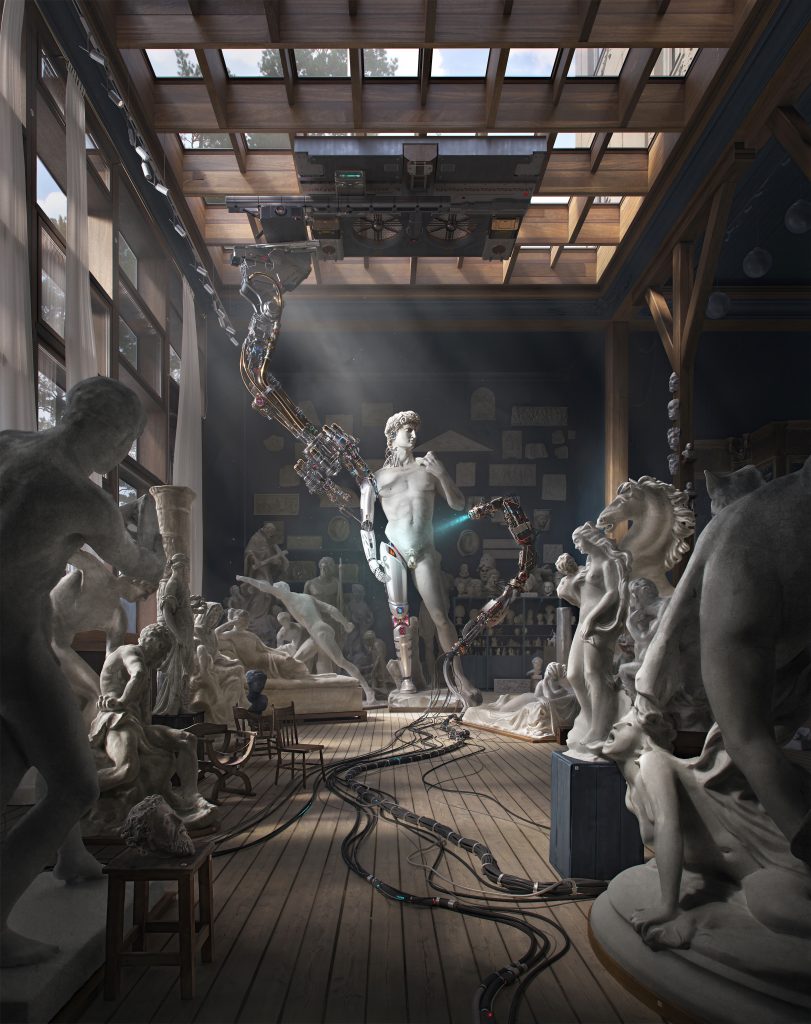
Vittorio Bonapace, Hellenica–Physical Counterpart. Image courtesy Milan’s DART | Dynamic Art Museum of the Permanente.
The hesitation in certain quarters hasn’t hindered the country’s digital scene from pushing forward, and some of its players are actively working to forge a link with the country’s artistic past. Major Italian museums were brought on board for the exhibition “Eternalizing Art History,” staged at Unit London in February, which sold digital replicas of Italian masterpieces.
“More than the financial role of Italy in the NFT space, it’s the artistic relevance of the Italian scene supported by many Italian institutions,” Alessio De Vecchi, SuperRare’s chief curator and also an accomplished Italian 3D artist, told Artnet News.
As elsewhere in the world, working in digital art also provides Italian artists with more career possibilities—especially against the backdrop of a worsening financial crisis and the pandemic’s hard knocks to the Italian culture sector. The underemployment rate in Italy, along with Spain and Greece, was ranked the worst in Europe at the end of 2021, according to Bloomberg, despite the fact that unemployment in the wider European Union is on the decline.
Working in the digital realm has been “life-changing for many artists,” according to SuperRare’s De Vecchi. They have been able to garner increased international exposure, opportunities, and contribute to an economic and cultural revival that the country needs to remain a global destination for contemporary art, he said.
The artist pinpointed Milan as a hub for this new Renaissance. “Milan has always been adventurous in term of art, even after WWII; it is a city that embraces new forms of art,” he said. “When I left Milan around 18 years ago, it was a depressed time for the arts, but … crypto art skyrocketed during the pandemic because we were all stuck at home in front of our computers all day. People got closer to technology.”
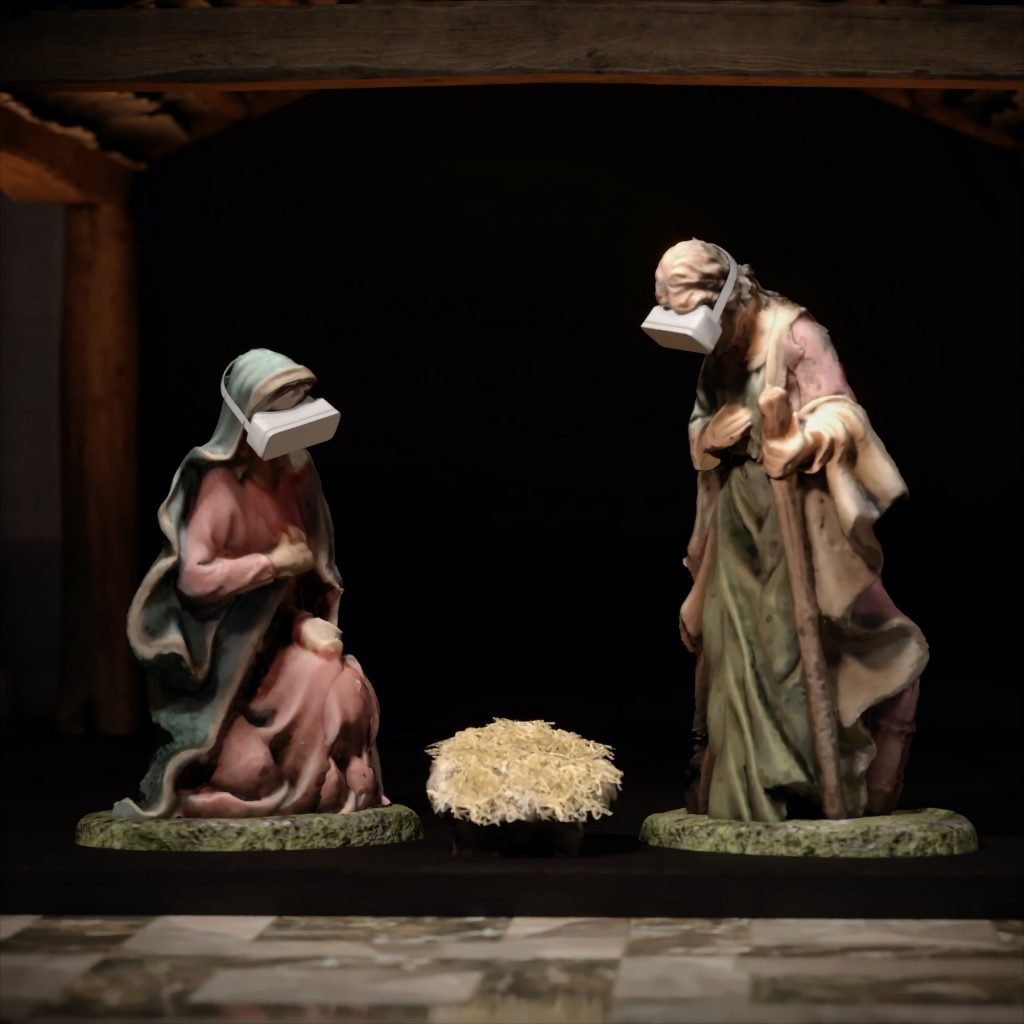
Federico Clapis, Searching for God. Courtesy SuperRare.
For all its advocates, the large-scale adoption of cryptocurrency in Italy faces big challenges in the form of regulation. Problems lie with how NFTs, a type of crypto asset, are taxed in the country. Italian financiers have also raised alarms over crypto’s growing popularity in the absence of firm regulatory standards. Certainly, the lack of clear-cut regulation creates an opportunity for criminals to utilize crypto for illegal activities, such as tax evasion, money laundering, and funding terrorism. But it also stunts the growth of the crypto economy in Italy.
“There are no important cryptocurrency companies in Italy like there are abroad,” digital art expert Maschietti said, noting the art tech marketplace Reasoned Art as one exception. Those wishing to do business in crypto are better off going to places like Switzerland or the UAE, which have better regulatory frameworks set in place.
“At a European level, we are only at a stage to issue consultations,” Luca Fantacci, co-director at Bocconi University’s MINTS (Monetary Innovation, New Technologies and Society), a research unit of the university, told Artnet News.
While Italian regulators have laid out anti-money laundering requirements for Virtual Asset Providers, or VASPs, that are in line with European directives, it will take some time for them to fully catch up to crypto. The process for companies to operate as a VASP in Italy involves setting up a registered Italian branch or subsidiary to operate with Italian customers, and addressing monitoring processes and risk assessments for customers in order to comply with the regulation. “This spills over to certain services in the NFT space such as NFT exchanges and custodians,” Ioannis Kympritis, a member of Bocconi Students Blockchain and Cryptocurrencies Association, told Artnet News. “It is doable but not simple.”
The challenges Italy has with establishing a market for cryptocurrency are twofold. On the one hand, Italy needs a firm regulatory framework to inspire confidence in the market, but it also needs this framework to be easy to navigate if it hopes to compete with other countries for domination in the crypto sphere.
“It’s a matter of increasing, not the quantity, but the certainty of regulation,” Fantucci said.
While there is a clearly a rising scene for digital art in Italy, the lack of a regulatory authority for virtual assets in the country, like what has been established in the Emirate of Dubai, has made it difficult for Italians to trade crypto at home. Until this happens, it looks like Italy will remain a hub for crypto art in so much as the art generated can be appreciated—but not as a place for it to be bought and sold.